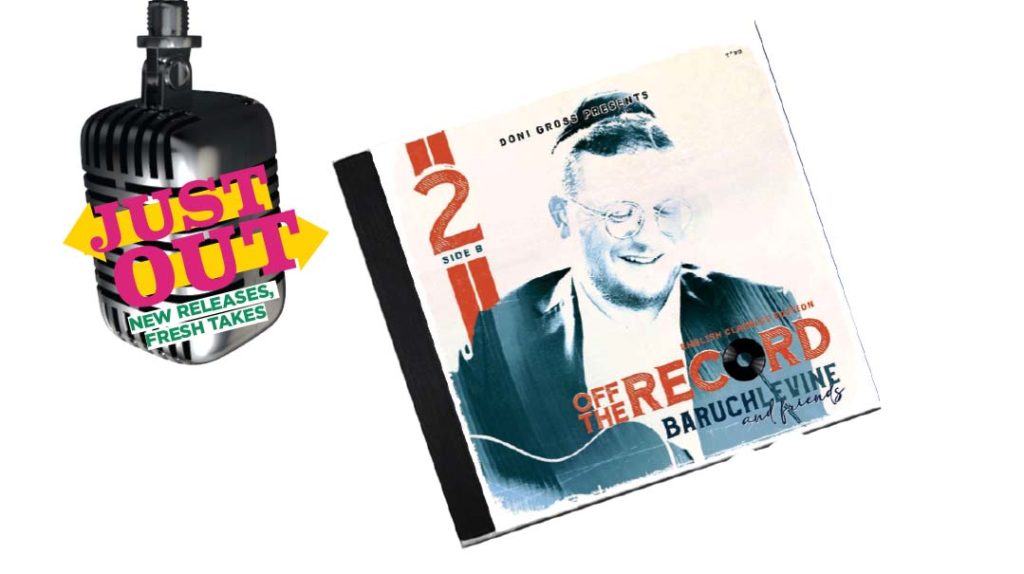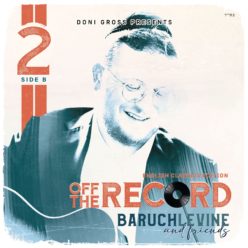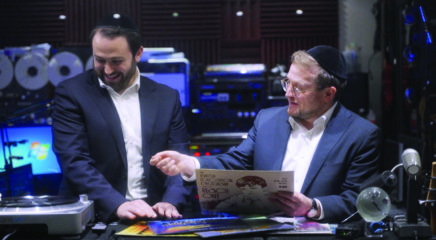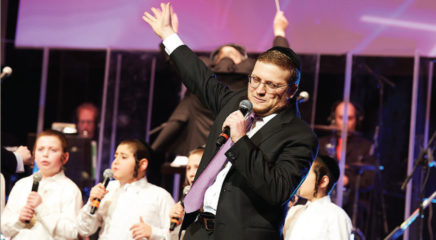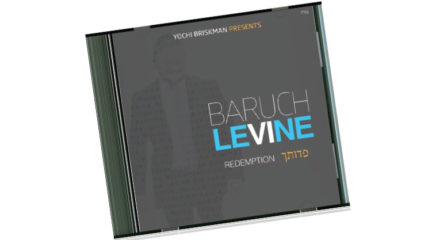“We had raised the bar so high with Off the Record that we were working under the pressure of all that highly positive feedback”
It was the first question I asked DONI GROSS and BARUCH LEVINE ahead of the release of their sequel nostalgia album, OFF THE RECORD 2: Didn’t you use up all the good songs on the first album?
“Well,” they say, “when we worked on the first Off the Record, we didn’t know there would be another volume, so we really went all out with the best selections. But after seeing how well the album was received, we decided to do a sequel — and discovered that no, we hadn’t used up all the good ones. There were many more, just waiting in the wings.”
This time around, Doni and Baruch, assisted again by project curator Yaakov Brown, made the decision to select unreservedly again. “We tried to figure out whether it made sense to go all out again, with the best playlist we could compile, or save some material for a future album, third in the series. In the end, we decided to put everything we had (55 tracks) into Volume 2.”
They’ve chosen songs that might jog your memory, but that haven’t played for decades. Some are 1990s-era classics, like Avraham Fried’s “Don’t Hide from Me” and Miami’s “Shabbos Yerushalayim,” and other earlier songs nearly forgotten, such as Tzlil V’Zemer’s “Be a Friend” and “To Love a Fellow Jew,” and one of the greatest oldies, London Pirchei’s “Children of Silence.” Some of the songs fell out of circulation because the original recordings didn’t have the sound quality we’re used to today, or were originally set to simplified arrangements for children’s albums, like “We Can Do Teshuvah” from The Purim Story album.
Working on the sequel to a mega hit can inspire, but also intimidate. “We had raised the bar so high with Off the Record,” Baruch says, “that we were working under the pressure of all that highly positive feedback.” Listeners had been invited to submit their own nostalgic favorites to a dedicated email address, but Baruch acknowledges that “most of the songs people requested were great songs that came into consideration for the last album, but just didn’t fit into our chosen themes.”
Sorting the songs by theme, rather than group, composer, or year, was Baruch’s experiment. It means that listening goes beyond the nostalgia of musical memories and into the heart of themes such as “Galus,” “Achdus,” or “Shabbos.” Doni was excited about that. “Putting the song in a setting of similar themes actually enhances the delivery and creates a great musical experience.” This time, they chose six different themes. The album begins with a loosely woven set named simply “Yiddishkeit.”
This time around, they also figured out a way to include some of the classic ballads that just seemed too long for a collection. “We figured out a way to abridge Abie’s long ballads so we could include them,” Doni says. “For example, ‘Ride the Train’ and ‘Neshomeleh’ came into question for the original album, but since we couldn’t sing the entire ‘story,’ we left them out. This time, by carefully selecting one verse and playing one cycle of the song, we managed to capture its essence.”
It’s very hard to please everyone, and in fact, says Baruch, the biggest complaint about the first album was that the song extracts were too short. “Some people felt we should have chosen a smaller playlist, and played each song longer,” he says.
(Originally featured in Mishpacha, Issue 890)
